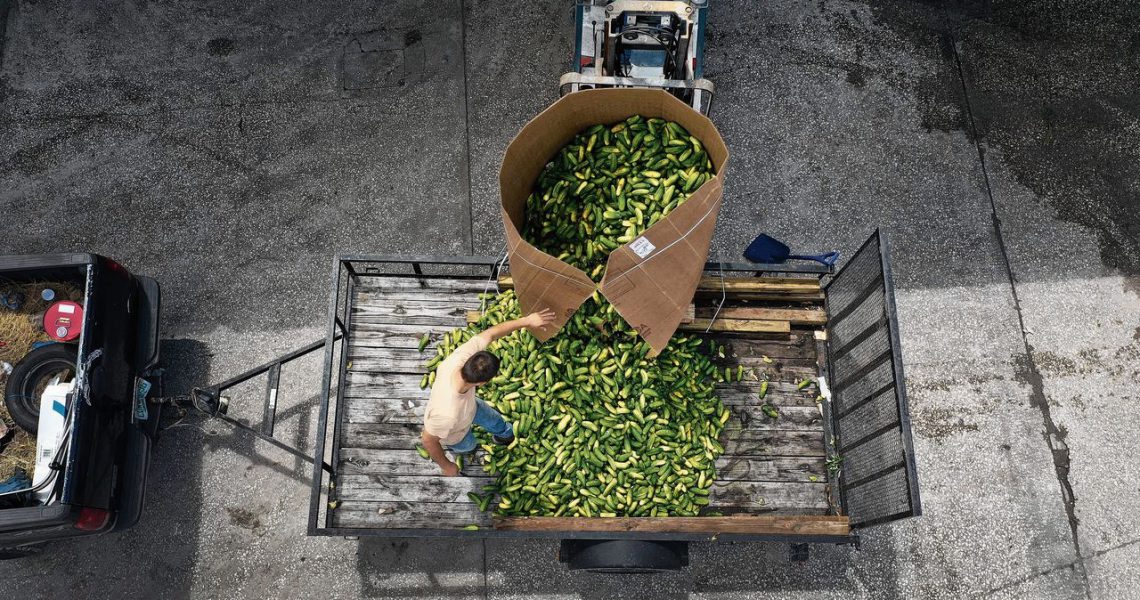
Efficient versus robust agrofood systems
29 May 2020The corona crisis and the hunt for medical services, equipment and materials once again show that an efficient health system is not the same as a robust system. An efficient system is cheap. The production of medical supplies is predominantly in the hands of some large private and market-oriented companies located all over the world. The system relies on complex global logistics, which requires uniformity of products, and minimizes inventory management (according to the so-called Just In Time principle). A robust system, on the other hand, takes account of major changes in nature and society, has a constant anchor in the form of a government that facilitates in the long term, is multifaceted and diverse in terms of products and producers, and is local and respects biodiversity and as self-sufficient as possible.
The same applies to the agricultural and food system. However, ecomodernists argue that globalization and intensification of agriculture with chemical have major advantages over local food. Folberth, C., Khabarov, N., Balkovič, J. et al. The global cropland-sparing potential of high-yield farming. Nat Sustain 3, 281–289 (2020)
They are in favour of the continuation of efficient and high input neo-liberal globalization in agriculture. It strikes that they often juggle with data and ignore the myriad of serious studies that indicate that short chains and robust farming have at least complementary functions to intensive industrial farming.
The Netherlands has always bet on an efficient food production system. However, as the environment changes dramatically with the emergence of unreliable governments and business partners, and a self-willed and headstrong nature, a robust system is more appropriate. Local and self-sufficient means not being dependent on complex global logistics, chemistry, monocultures and unsustainable production, and no more nature destruction.
Dutch consumers have in this Corona period also been buying more and more locally lately, estimates are now around 15 percent. https://www.globalinfo.nl/Achtergrond/corona-en-de-toekomst-van-ons-voedsel.
Many areas in the southern part of the world preceded these consumers. In rural areas in Ghana, Uganda and the north of Malawi, a reasonably to well-running local food production system has been dominant for years.
Raw materials are hardly purchased from outside, and use is made of “services” of the local natural ecosystem. Organisms in the soil, roots, and aboveground factors (such as water) and crops determine which crops are put together. Farmers have to think like a worm. They don’t dig trenches and water reservoirs but treat trees as rivers, which give off water in dry times. In this robust, less risky way, many poor farmers in southern countries feed about 2 to 3 billion people. An important difference here is also the low animal production and the associated animal feed production.
It is of course different with the food systems in the major metropolises such as Lagos, Accra or Cape Town. When there is a great dependence on Western junk food, one is dependent on grain, fish and meat imports. But also in cities, local agriculture can avoid the deadly embrace of efficient agriculture through local urban agriculture, with major positive effects for ecology and health. From big to small: the significance of smallholder farms in the global food system
The efficient system, which is dominant in the Netherlands, has led to high yields and enormous exports. At the same time, a huge import is required. It also results in great destruction of nature (and inherent health problems). Efficient food production cannot respond adequately to natural or man-made disasters, to governments that are suddenly shielding their land (as is currently happening), to disruptions in timetables. In addition, efficient production often conflicts with biodiversity: a farmer who wants to produce efficient protein-rich feed provides as much high-quality grass as possible, but you can forget about biodiversity (herb-rich fields, bird management). A value that cannot be expressed in money is destroyed. Globally, there is a clear link between an increase in chemistry and a decrease in (agro) biodiversity.
It is also interesting that the revenue model of local, extensive farmers is very positive. This is not the case of farmers who produce for the world market. Dutch accountants have calculated that “the most extensive dairy farms per hectare lost almost € 1,200 for the purchase of feed compared to € 2,500 for the most intensive companies”, as can be read on Boerderij.nl. Other operating costs were also lower for extensive farmers.
Jan Douwe van der Ploeg (2020): Farmers’ upheaval, climate crisis and populism, The Journal of Peasant Studies, DOI: 10.1080/03066150.2020.1725490
Ecomodernists dismiss the complaints that our food is too cheap; they pretend to act on behalf of poor people. But statistics shows year after year that junk food is cheaper and healthy food more expensive. Isn’t that a problem? Robust agriculture does not have to be expensive. A family that subscribes to Community Farming, a CSA (community supported agriculture) farm or a Local2Local farmer or Support your local farmer pays about ten euros per week for a full bag of mainly fruit and vegetables for an entire week.
In short: robust, local and self-sufficient agriculture has major ecological and ethical advantages over efficient agriculture.
Prof. dr. M. Korthals, currently Professor Philosophy, University of Gastronomic Sciences, Pollenzo/Bra (Italy); em. Professor Applied Philosophy, Free University and Wageningen University
 English
English Dutch
Dutch 


